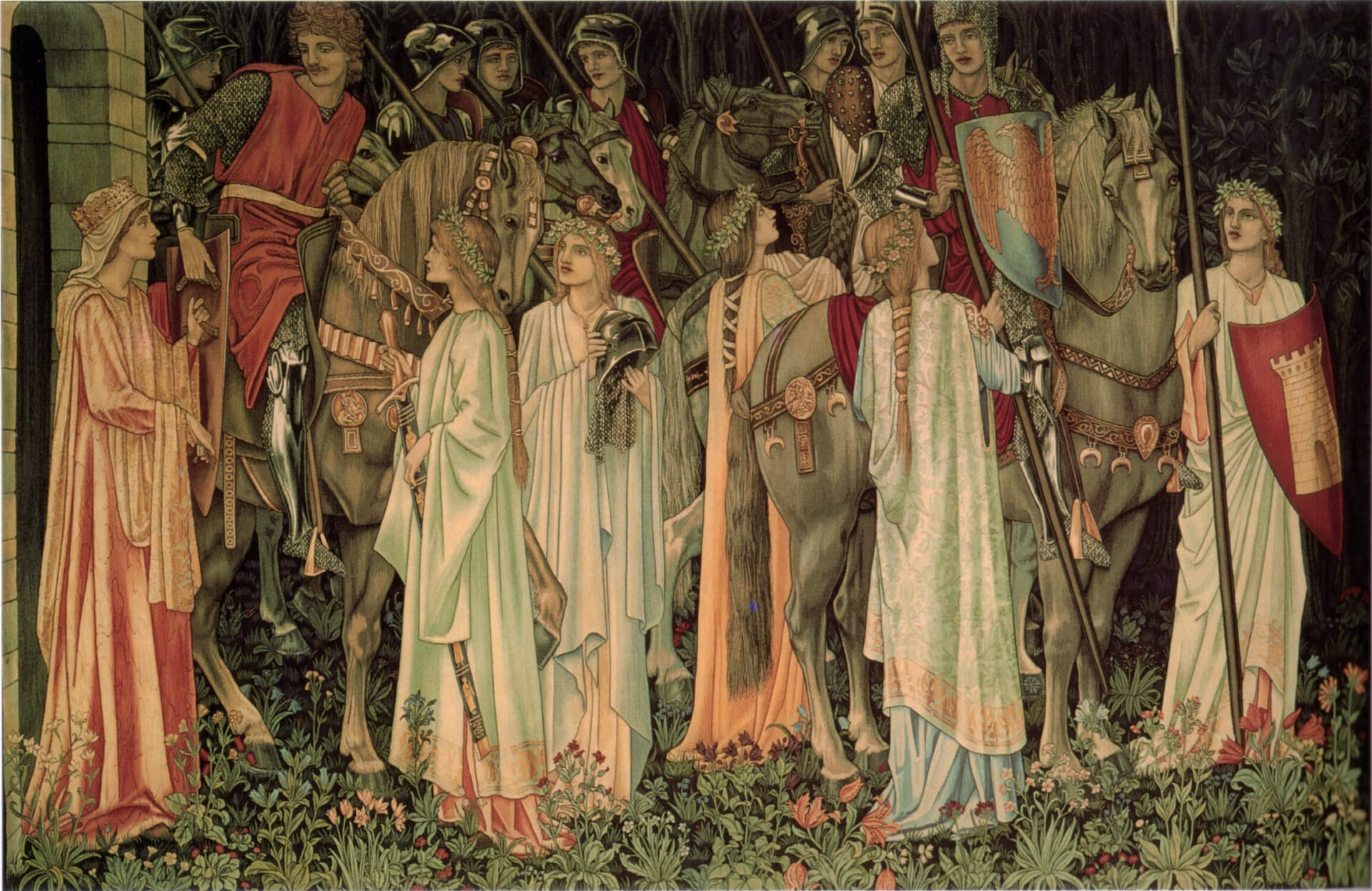The knights of the Round Table formed a legendary and mythical cavalry order. The Norman poet Wace in his work Roman de Brut (1155) names for the first time the Round Table in this work and thus becomes one of the central elements of the Arthurian novel. The Round Table revealed the equitable character of King Arthur, who decided that there would be no privileges among all knights who wanted to follow him and that all opinions would be heard equally, including those of the king himself. It is not known whether it was created by King Arthur, by his father or was a wedding gift for Arthur and Guinevere, what was clear was its purpose: that the best knights would sit around it.
The table was originally built for twelve people, inspired by Charlemagne and his twelve peers and, in turn, the Last Supper. With the continued addition of knights to the court of King Arthur, the Round Table was expanded to three hundred and sixty-six seats. Medieval painters imagined the ring-shaped table, covered with rich fabrics and exquisite tableware. From the beginning all the chairs of the Round Table were occupied except one, the so-called Dangerous Seat, reserved for that knight predestined to find the Holy Grail. He who dared to sit down and was not the chosen one would die on the spot.
From one version of Arthurian history the names of the knights who were part of the court of King Arthur vary. What is clear is that it has come to us as a brotherhood with a code of honour and courteous courage whose influence would date from the 12th century, from the orders of knights that were formed in Europe.
Leading Knights
As we have already said, at first the Round Table was composed of twelve knights and King Arthur. Of all of them, the best known has been Lanzarote or Lancelot, either for having been the favourite of King Arthur or for his romance with Queen Guinevere. But until Lancelot’s arrival at Camelot, Sir Gawain was regarded as the perfect knight, not only because he was Arthur’s nephew and possible heir to the throne by not having that offspring, but also for the numerous occasions in which he is mentioned in literature as the protagonist of numerous Arthurian adventures, such as Sir Gawain and the Green Knight, 14th century English romance, and for accompanying other knights in their stories such as Lancelot in El Caballero de la Carreta, Yvaín in El Caballero del León and Perceval in The tale of Graal. Each knight had a peculiarity that made him different from the others; in this case, Sir Gawain saw his strength increased when the sun rose and diminished when it hid.
Sir Yvaín, son of Morgana, sister of King Arthur, participated in almost all the adventures that the knights of the Round Table carried out together. Yvain had to decide between staying married to his wife or dedicating himself body and soul to his duties as a knight of Camelot. Opting for the latter, he suffered so much love that he almost lost his mind because of the pain caused by the loss of his beloved.
Sir Perceval is another of the famous knights of the Round Table. His involvement in the search for the Holy Grail is remarkable. He never met other knights, nor was his origin noble, but one day walking through the forest, he saw a group of knights and, impressed by their appearance, traveled to Camelot, where he was invested knight and invited to join the Round Table. In Chrétien’s book of Troyes, The Tale of the Grail, Perceval is the knight destined to seize the Grail.
Son of the Ban kings of Benwich and Elaine, Sir Lancelot fled with his parents when they were defeated by the enemy. Seeing that she had to take care of her husband and could not take care of the child, her mother handed him over to the Lady of the Lake to take care of him (hence the nickname of Del Lago). After educating him to be a knight, he was sent to Camelot where he soon joined the Round Table. Perhaps the figure of Lancelot has remained in our mind as that of that knight who betrayed a king, who had placed all his trust in him, maintaining a loving relationship with Queen Guinevere. But his acts as a knight and his continuous battles against Arthur’s enemies, make him one of the most faithful and loyal knights to the Round Table, obviously not to King Arthur.
We have already mentioned that the knights of the Round Table went from twelve to more than three hundred. It is impossible to name each and every one of them, although in some studies their names have been reflected. In the chapter dedicated to the family of King Arthur, we will talk about Mordred, his illegitimate son and also knight of Camelot; for the others, we will let our imagination fly and think if they really were knights or, in some cases, they let themselves be carried away by interests and, Instead of pursuing their end, which was the quest for the Grail, they devoted themselves to other, less sacrosanct and moralizing duties.
As in every group of “friends” discrepancies and rivalries arose, but focusing on the fact that all of them revolve around the figure of Arthur and his mission, we will avoid this issue so that the figure of such knights is safeguarded from any negative aspect and be an example to follow in virtue, loyalty and generosity (not everything is as it seems)
